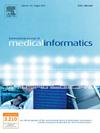确定住院数据中的治疗事件以衡量疾病负担:个人水平数据分析的指南和方案
IF 3.7
2区 医学
Q2 COMPUTER SCIENCE, INFORMATION SYSTEMS
International Journal of Medical Informatics
Pub Date : 2025-03-19
DOI:10.1016/j.ijmedinf.2025.105847
引用次数: 0
摘要
背景:我们不知道有任何全面的、公开可用的、标准化的协议或语法来处理医院入院数据,用于个人层面的分析。如果不能以标准化的方式适当地处理和分析数据,可能会导致对发病率的错误估计、研究之间的不一致,以及为临床实践和卫生政策提供信息的不正确发现。目的开发一个开源的、标准化的协议,用于处理可定期更新的入院剧集数据。方法我们确定了需要处理以定义单个护理事件(即事件)的常见数据结构,并开发了Stata代码来解决这些问题。然后,我们使用英国入学数据提供了一个完整的工作示例。代码存储在一个允许实时更新的公共在线平台上。结果:需要处理的常见数据结构包括重复记录、较长护理期内较短的记录和错误编码的传输。使用英国入院数据样本,数据处理导致33170例心肌梗死作为主要诊断的记录被细化为18289例护理(即事件)。记录与治疗事件的比例因不同的初级诊断而异:例如,肺癌有29,274份记录和26,389次事件;肺炎方面,有21029例记录和12334例事件;至于头部受伤,有21,957项记录,17736项。结论适当的数据处理对获得准确的住院数据至关重要。为此,我们提供了开源的实时语法。本文章由计算机程序翻译,如有差异,请以英文原文为准。
Identifying episodes of care in hospital admissions data for measures of disease burden: A tutorial and protocol for individual-level data analysis
Background
We are not aware of any comprehensive, publicly available, standardised protocol or syntax for the processing of hospital admissions data for individual-level analysis. Failure to appropriately process and analyse data in a standardised manner could lead to misestimation of event rates, inconsistency between studies, and incorrect findings informing clinical practice and health policy.
Aim
To develop an open source, standardised protocol for processing of admitted episodes data that can be regularly updated.
Methods
We identified common data structures that require processing to define single episodes of care (i.e., events) and developed Stata code to address these. We then presented a full worked example using UK admission data. The code is stored on a public online platform that allows living updates. Results: Common data structures requiring processing include duplicated records, shorter records within a longer period of care, and mis-coded transfers. Using the UK admission data sample, data processing resulted in 33,170 records with myocardial infarction as the primary diagnosis being refined to 18,289 episodes of care (i.e., events). The ratio of records to episodes of care varied for different primary diagnoses: for example, for lung cancer, there were 29,274 records and 26,389 events; for pneumonia, 21,029 records and 12,334 events; and for head injury, 21,957 records and 17,736 events.
Conclusion
Appropriate data processing is vital to derive accurate results from hospital admissions data. We have presented open source, live syntax for this purpose.
求助全文
通过发布文献求助,成功后即可免费获取论文全文。
去求助
来源期刊

International Journal of Medical Informatics
医学-计算机:信息系统
CiteScore
8.90
自引率
4.10%
发文量
217
审稿时长
42 days
期刊介绍:
International Journal of Medical Informatics provides an international medium for dissemination of original results and interpretative reviews concerning the field of medical informatics. The Journal emphasizes the evaluation of systems in healthcare settings.
The scope of journal covers:
Information systems, including national or international registration systems, hospital information systems, departmental and/or physician''s office systems, document handling systems, electronic medical record systems, standardization, systems integration etc.;
Computer-aided medical decision support systems using heuristic, algorithmic and/or statistical methods as exemplified in decision theory, protocol development, artificial intelligence, etc.
Educational computer based programs pertaining to medical informatics or medicine in general;
Organizational, economic, social, clinical impact, ethical and cost-benefit aspects of IT applications in health care.
 求助内容:
求助内容: 应助结果提醒方式:
应助结果提醒方式:


